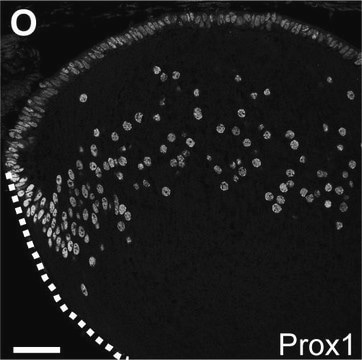AB3594
Anti-Aquaporin 4 Antibody, CT
Chemicon®, from rabbit
Synonym(s):
Mercurial-Insensitive Water Channel
About This Item
Recommended Products
biological source
rabbit
Quality Level
antibody form
affinity isolated antibody
antibody product type
primary antibodies
clone
polyclonal
species reactivity
mouse, human, rat
manufacturer/tradename
Chemicon®
technique(s)
immunohistochemistry: suitable
western blot: suitable
NCBI accession no.
UniProt accession no.
shipped in
wet ice
target post-translational modification
unmodified
Gene Information
human ... AQP4(361)
General description
Specificity
Immunogen
Application
A previous lot of this antibody was used on rat brain sections.
Dilutions should be made using a carrier protein such as BSA (1-3%).
Western blotting:
1:500-1:1,000 using ECL on rat brain membranes.
Optimal working dilutions must be determined by the end user
Neuroscience
Ion & Transport Channels
Quality
Western Blot Analysis: 1:500 dilution of this lot detected AQUAPORIN 4 on 10 μg of Mouse Brain lysates.
Target description
Physical form
Storage and Stability
Analysis Note
Clear vial of RbX Aquaporin 4, CT Control Antigen(AB3594-50ULb) included free of charge with the antibody is 120 µg of control antigen (lyophilized powder). Reconstitute with 100 µL of PBS. For positive control, in Western blot use 20 ng of protein per Minigel lane. For negative control, preincubate 3 µg of purified peptide with 1 µg of antibody for one hour at room temperature. Optimal concentrations must be determined by the end user.
Other Notes
Legal Information
Disclaimer
Not finding the right product?
Try our Product Selector Tool.
wgk_germany
WGK 2
flash_point_f
Not applicable
flash_point_c
Not applicable
Certificates of Analysis (COA)
Search for Certificates of Analysis (COA) by entering the products Lot/Batch Number. Lot and Batch Numbers can be found on a product’s label following the words ‘Lot’ or ‘Batch’.
Already Own This Product?
Find documentation for the products that you have recently purchased in the Document Library.
Our team of scientists has experience in all areas of research including Life Science, Material Science, Chemical Synthesis, Chromatography, Analytical and many others.
Contact Technical Service








